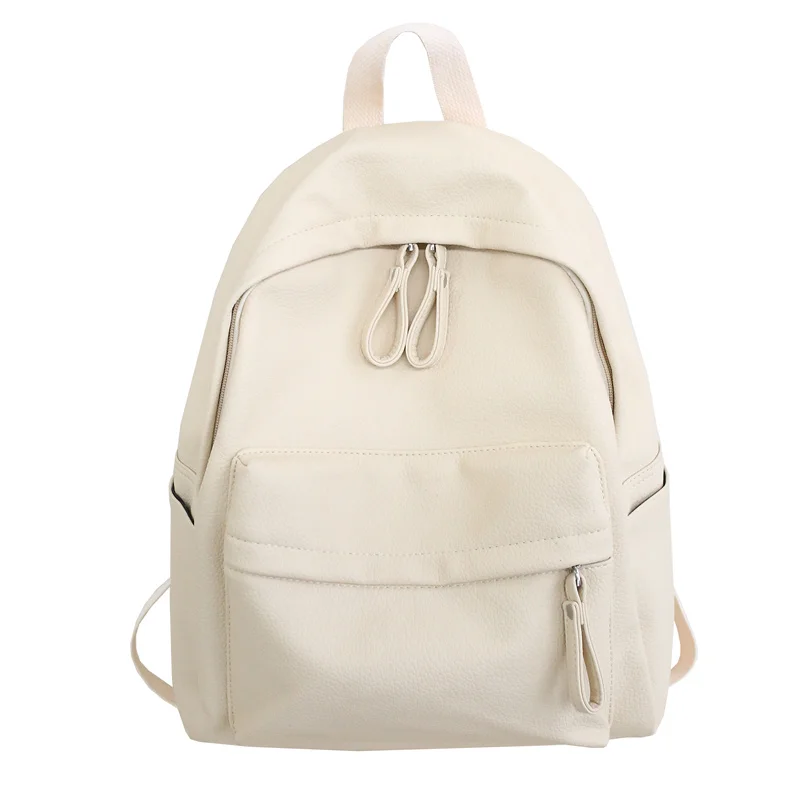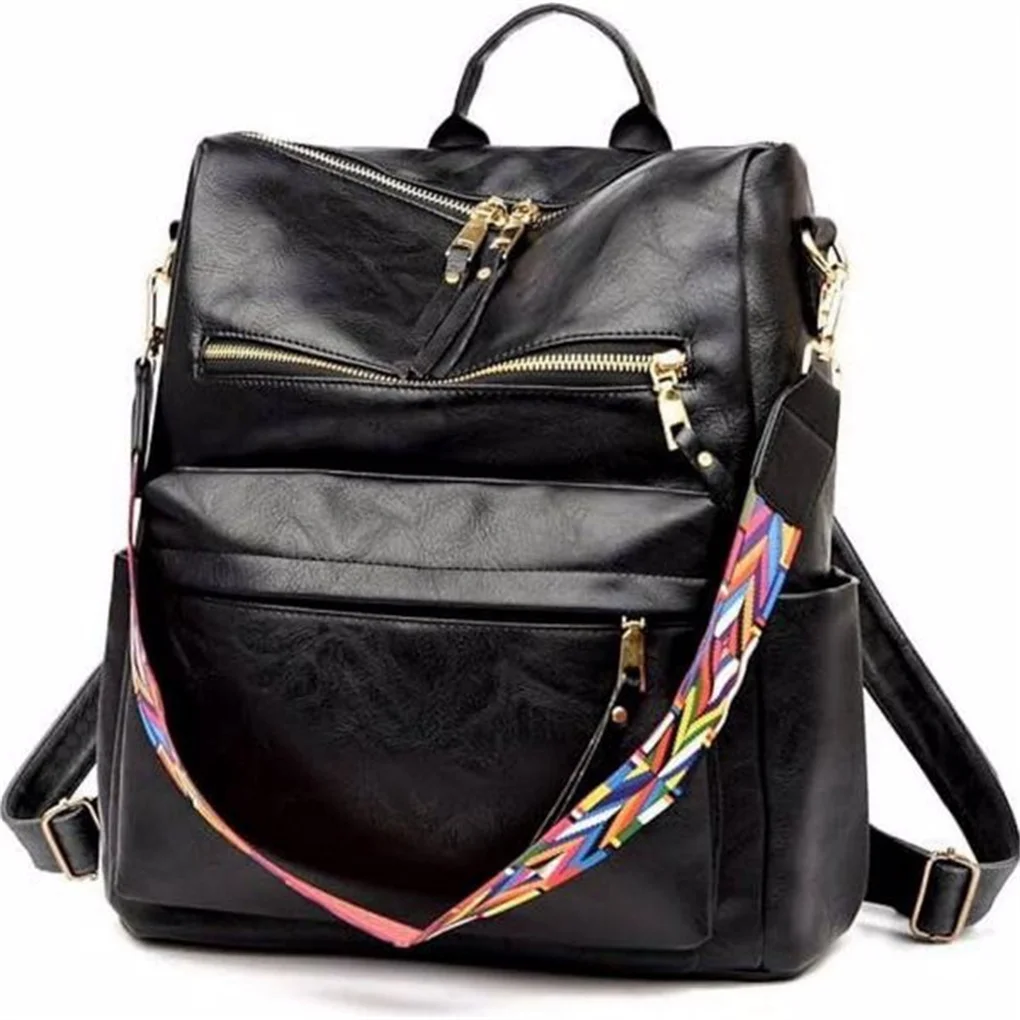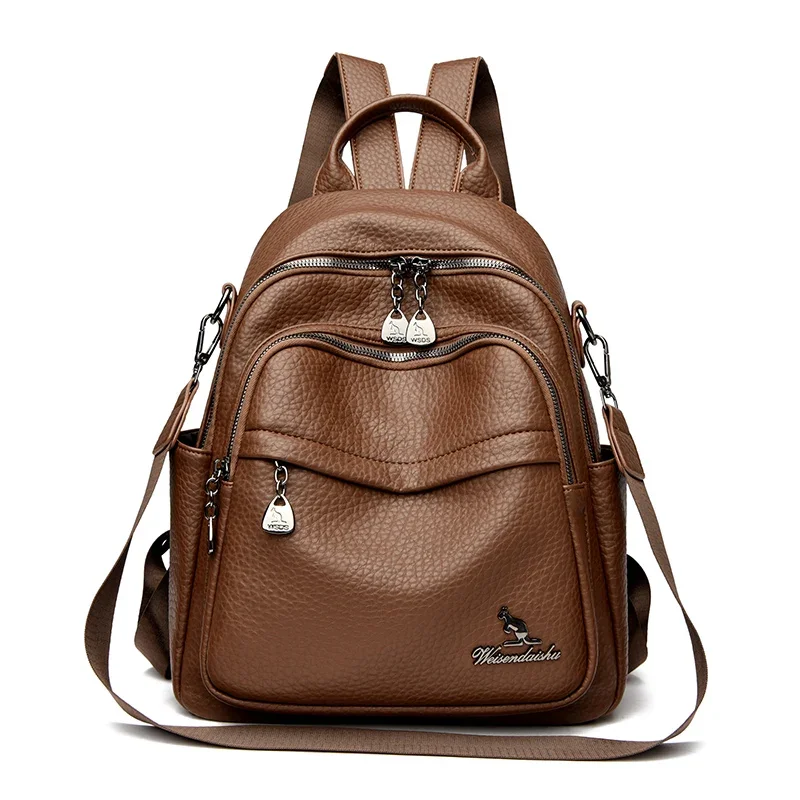In today’s marketplace, eco-friendly leather certifications have become increasingly crucial for businesses committed to sustainable practices. The conventional leather industry faces significant environmental challenges, from excessive water usage and chemical pollution to substantial carbon emissions. With growing consumer awareness and demand for responsible products, these certifications serve as vital tools for verifying sustainability claims and demonstrating genuine environmental commitment.
For brands and manufacturers, certifications provide a standardized way to evaluate suppliers and communicate sustainability efforts to consumers. Meanwhile, consumers gain confidence that their purchases align with their values. Leather certifications span various aspects of sustainability, from production processes and chemical management to worker welfare and animal treatment.
As we explore the landscape of eco-friendly leather certifications, we’ll examine the key standards that define sustainable leather sourcing and how they address the environmental challenges of traditional leather production. Proper leather conditioning and waterproofing techniques complement these certifications by extending product life and reducing the need for replacement, while premium products made from full-grain leather backpacks often incorporate these sustainable practices into their production.
Understanding Leather Certification Categories and Their Significance
Leather certifications serve different purposes and address various aspects of sustainability. Understanding these categories helps businesses identify the most relevant certifications for their specific needs:
- Environmental performance certifications focus on resource usage, waste management, carbon footprint, and overall ecological impact of leather production
- Chemical management certifications address the use of harmful substances, restricted chemicals, and safer processing methods
- Social responsibility certifications evaluate fair labor practices, worker safety, and community impact
- Animal welfare certifications assess ethical sourcing, humane treatment, and traceability of animal products
- Supply chain transparency certifications verify documentation and traceability from raw materials to finished products
The scope of certifications varies significantly—some apply only to raw material suppliers, others to tanneries, and some to finished product manufacturers. Many certification systems also feature different levels or ratings, allowing companies to demonstrate progressive improvement over time.
For businesses serious about sustainability, understanding the vegetable tanned leather sourcing process is essential, as this traditional method significantly reduces environmental impact compared to chrome tanning and is recognized by many certification programs.
Key Environmental Performance Certifications for Leather Products
Environmental performance certifications focus primarily on reducing the ecological footprint of leather production. These certifications evaluate resource usage, emissions, waste management, and overall environmental impact throughout the production process.
Leather Working Group (LWG): The Industry Benchmark
The Leather Working Group certification represents the gold standard for environmental performance in leather production. This internationally recognized program specifically focuses on tanneries and leather manufacturers, assessing:
- Water consumption and conservation measures
- Energy usage and efficiency programs
- Waste management and reduction strategies
- Air and noise emissions control
- Chemical management systems
- Traceability of raw materials
LWG certification uses a tiered rating system—Gold, Silver, Bronze, and Audited—based on the facility’s performance against strict environmental criteria. The assessment is comprehensive, evaluating over 500 points of environmental impact.
For brands like Summit Carry, sourcing from LWG-certified suppliers ensures that leather materials come from facilities that have demonstrably reduced their environmental impact. LWG-certified tanneries typically achieve 20-40% reductions in water usage and 15-25% reductions in energy consumption compared to non-certified operations.
With over 1,000 LWG-certified facilities worldwide, this certification has become a fundamental requirement for brands committed to sustainable leather sourcing.

Cradle to Cradle Certified®: Designing for Circularity
Cradle to Cradle Certified® takes a holistic approach to product sustainability by focusing on circular economy principles. This certification evaluates leather products across five critical categories:
- Material Health: Ensures products are made using chemicals and materials that are safe for humans and the environment
- Material Reutilization: Evaluates product design for recyclability or biodegradability
- Renewable Energy & Carbon Management: Assesses the use of renewable energy in manufacturing
- Water Stewardship: Examines responsible water usage and discharge quality
- Social Fairness: Reviews fair labor practices and community impact
Certification levels (Basic, Bronze, Silver, Gold, and Platinum) are determined by the lowest score achieved across all categories, encouraging balanced improvement across all sustainability aspects.
For premium leather goods like backpacks, Cradle to Cradle certification demonstrates a commitment to designing products that can be safely returned to either technical or biological systems at the end of their useful life. This aligns perfectly with high-quality leather goods designed for longevity and DIY leather care for travel backpacks that extends product lifespan.
Blue Angel (Der Blaue Engel): Germany’s Eco-Label for Leather
As one of the world’s oldest environmental certification programs, Blue Angel has been setting standards for eco-friendly products since 1978. For leather goods, Blue Angel certification criteria include:
- Strict limits on formaldehyde, heavy metals, and other harmful substances
- Restrictions on banned azo dyes and other hazardous colorants
- Requirements for more environmentally friendly tanning processes
- Durability standards ensuring long product life
- Guidelines for product repairability
The Blue Angel label enjoys exceptionally high consumer recognition in European markets (over 80% in Germany), making it particularly valuable for brands selling leather goods in these regions. The certification is especially relevant for luxury leather backpack manufacturers who want to demonstrate environmental responsibility without compromising on quality.
Chemical Management Certifications for Safer Leather Production
Chemical management certifications address one of the most significant environmental and health concerns in leather production: the use of potentially harmful substances. These certifications focus on eliminating or restricting dangerous chemicals while ensuring product safety.
ZDHC Roadmap to Zero Programme: Eliminating Hazardous Chemicals
The Zero Discharge of Hazardous Chemicals (ZDHC) programme represents a collaborative effort to eliminate dangerous chemicals from textile and leather supply chains. The comprehensive ZDHC toolkit includes:
- Manufacturing Restricted Substances List (MRSL): Defines chemical substances banned from intentional use in facilities processing textiles and leather
- Wastewater Guidelines: Establishes standards for wastewater discharge quality
- Chemical Management System Framework: Provides guidance for proper chemical handling
- Academy: Offers training and education resources for implementation
ZDHC implementation follows three progressive levels—Foundational, Progressive, and Aspirational—allowing companies to gradually improve their chemical management practices.
The ZDHC MRSL restricts over 160 chemical substances or groups of substances, far exceeding regulatory requirements in most countries. For premium leather goods manufacturers, ZDHC compliance significantly reduces chemical risks throughout the supply chain, leading to safer products and reduced environmental impact.

OEKO-TEX® Leather Standard: Consumer Safety Focus
The OEKO-TEX® Leather Standard specifically addresses consumer safety by testing leather products for harmful substances. Testing parameters include:
- Banned azo dyes and allergenic disperse dyes
- Carcinogenic and allergenic dyes
- Heavy metals (arsenic, lead, cadmium, chromium, etc.)
- Formaldehyde levels
- Pentachlorophenol and tetrachlorophenols
- Phthalates and organic tin compounds
- Volatile organic compounds
The certification uses a product class system (I-IV) based on how closely the leather contacts human skin, with stricter limits for items with direct skin contact. OEKO-TEX® testing is typically more stringent than regulatory requirements, with limits often set at 10-100 times lower than legal thresholds.
For consumers, this certification provides assurance that their leather goods are free from harmful substances, making it particularly valuable for products like backpacks that are used daily and come into frequent contact with skin. The ultimate guide to conditioning leather backpacks complements this by ensuring safe and effective care throughout product life.
OEKO-TEX® STeP: Holistic Production Facility Assessment
While the Leather Standard focuses on the product, OEKO-TEX® STeP (Sustainable Textile & Leather Production) evaluates entire production facilities across six comprehensive modules:
- Chemical Management: Assessment of chemicals used and management systems
- Environmental Performance: Evaluation of water and energy consumption, waste management
- Environmental Management: Review of environmental policies and management systems
- Social Responsibility: Assessment of working conditions and labor practices
- Quality Management: Evaluation of quality control systems
- Health & Safety: Review of workplace safety measures and employee protection
STeP certification assigns scores for each module and calculates an overall facility rating. This holistic approach helps manufacturers streamline multiple sustainability initiatives under one assessment framework.
For brands sourcing leather goods, STeP-certified facilities demonstrate comprehensive commitment to sustainable practices beyond just chemical management, typically achieving 15-30% improvements in resource efficiency and significant reductions in workplace incidents.
Holistic Company Certifications Relevant to Leather Businesses
Beyond product-specific certifications, several programs evaluate entire companies and their overall sustainability practices. These holistic certifications demonstrate a broader commitment to responsible business operations.
B Corp Certification: Verifying Company-Wide Sustainability Commitment
B Corp certification assesses a company’s entire social and environmental impact through a rigorous evaluation process. The B Impact Assessment examines:
- Governance: Accountability, transparency, mission, and stakeholder engagement
- Workers: Compensation, benefits, training, worker ownership, and work environment
- Community: Supplier relations, diversity, charitable giving, and local involvement
- Environment: Energy, water, materials, emissions, waste management, and transportation
- Customers: Products/services addressing social problems, serving underserved populations
Companies must score at least 80 out of 200 possible points and legally commit to considering stakeholder interests in decision-making. Recertification is required every three years to ensure ongoing compliance.
For leather goods companies, B Corp status signals a comprehensive commitment to sustainability beyond individual products. Certified B Corps in the leather industry typically score 20-40% higher on environmental metrics than non-certified peers, and studies show consumers are 4-6 times more likely to trust companies with B Corp certification.
The certification aligns well with brands that emphasize product longevity and leather maintenance guides for commuters that help consumers extend the useful life of their purchases.
Understanding Traceability in Eco-Friendly Leather Supply Chains
Traceability—the ability to track a material from its origin through processing and manufacturing to the final product—poses unique challenges in leather supply chains:
- Multiple processing stages (farming, slaughterhouse, tanning, finishing, manufacturing)
- Geographic dispersion across multiple countries and facilities
- Batch mixing during processing, which can obscure origins
- Documentation gaps between different supply chain stages
Effective traceability systems help verify sustainability claims by ensuring certified materials actually end up in the final products. Modern traceability solutions include:
- Physical marking systems (tags, stamps)
- Digital tracking platforms
- Blockchain technology for immutable record-keeping
- DNA and isotope testing for origin verification
Several certifications now include traceability requirements, with LWG’s leather traceability module being particularly notable. These systems help brands confidently make sustainability claims about their products and provide transparency for consumers interested in the origins of their men’s leather backpack or other leather goods.
Strategic Implementation of Leather Certifications for Businesses
Implementing leather certifications requires strategic planning based on business type, size, target market, and sustainability goals:
For brands and retailers:
– Start by assessing current suppliers’ certifications
– Develop a tiered approach—essential vs. preferred certifications
– Create a timeline for transitioning to certified suppliers
– Train sales staff to accurately communicate certification benefits
For manufacturers:
– Conduct a gap analysis between current practices and certification requirements
– Prioritize certifications based on customer requirements and market demands
– Develop an implementation roadmap with clear milestones
– Consider pursuing complementary certifications that share similar requirements
For supply chain managers:
– Map the entire supply chain to identify certification gaps
– Work with suppliers on capacity building for certification compliance
– Implement robust documentation systems for verification
– Plan for regular audits and continuous improvement
Certification costs vary significantly—from a few thousand dollars for basic certifications to $50,000+ for comprehensive programs like B Corp or multiple-facility LWG certification. However, certified companies typically recoup these investments through improved operational efficiency, waste reduction, and market access.

Comparative Analysis: Selecting the Right Leather Certifications
When evaluating which certifications to pursue or require from suppliers, consider these key factors in the comparison table:
| Certification | Primary Focus | Supply Chain Stage | Verification Type | Geographic Recognition | Relative Cost |
|---|---|---|---|---|---|
| Leather Working Group | Environmental performance | Tanneries, leather processors | Third-party audit | Global, especially strong in Europe, North America | Medium-High |
| ZDHC | Chemical management | Material suppliers, tanneries | Self-assessment with verification | Global | Medium |
| OEKO-TEX® Leather Standard | Chemical safety, consumer health | Finished products | Laboratory testing | Global, especially strong in Europe | Low-Medium |
| OEKO-TEX® STeP | Facility sustainability | Manufacturing facilities | Third-party audit | Global | Medium-High |
| Blue Angel | Environmental impact, consumer health | Finished products | Third-party verification | Strongest in Europe, especially Germany | Low-Medium |
| Cradle to Cradle | Circular economy, holistic sustainability | Products and manufacturing | Third-party assessment | Global, strongest in North America and Europe | High |
| B Corp | Company-wide impact | Entire business | Third-party verification | Global, strongest in North America and Europe | High |
The most effective certification strategy often combines complementary programs—for example, LWG for tanneries, OEKO-TEX® for finished products, and potentially B Corp for overall company practices. This approach provides comprehensive coverage across environmental, chemical, and social aspects of leather goods production.
For businesses with limited resources, prioritizing certifications based on target market requirements and customer expectations makes the most sense. European markets generally place higher value on environmental certifications, while North American consumers may respond more strongly to social impact certifications like B Corp.
The certification landscape is particularly relevant for manufacturers of women’s leather backpacks and other premium leather goods, where sustainability claims increasingly influence purchasing decisions.
Beyond Certifications: Additional Approaches to Sustainable Leather
While certifications provide standardized verification, truly sustainable leather sourcing incorporates additional innovative approaches:
- Advanced tanning technologies:
- Vegetable tanning using plant-based tannins
- Chrome-free mineral tanning alternatives
Low-water and closed-loop processing systems
Material innovation:
- Recycled leather made from production scraps
- Bio-based tanning agents from agricultural waste
Hybrid materials combining leather with renewable resources
Circular business models:
- Repair services extending product lifespan
- Take-back programs for end-of-life products
Upcycling initiatives for leather waste
Manufacturing optimization:
- Digital cutting technology reducing waste by 15-25%
- Pattern efficiency techniques maximizing hide usage
- Energy-efficient production equipment
Summit Carry incorporates these approaches alongside certified materials, focusing on products designed for longevity rather than seasonal replacement. This philosophy recognizes that the most sustainable product is one that doesn’t need frequent replacement.
Is Certified Leather Truly Sustainable? Addressing Common Questions
Is certified leather truly sustainable, or just ‘less bad’?
Certified leather represents significant improvement over conventional production but isn’t impact-free. The best certifications drive continuous improvement rather than claiming perfect sustainability. When combined with longevity-focused design, certified leather can be a responsible material choice.
How can consumers verify certification claims on products?
Most certification programs offer verification tools through their websites, including certificate numbers that can be checked online. Legitimate certifications will also have clear criteria publicly available for review.
What’s the difference between ‘eco-friendly,’ ‘sustainable,’ and ‘vegan’ leather?
‘Eco-friendly’ leather typically refers to leather produced with reduced environmental impact. ‘Sustainable’ leather addresses broader environmental, social, and economic factors. ‘Vegan leather’ contains no animal products but may use synthetic materials with their own environmental considerations.
Are there specific animal welfare certifications for leather?
While dedicated leather animal welfare certifications are limited, several programs like Responsible Leather Round Table are developing standards. Currently, traceability certifications that verify sourcing can help ensure alignment with animal welfare standards.
Do certifications guarantee ethical labor practices?
Social compliance certifications like SA8000 and Fair Trade specifically address labor practices. Environmental certifications like LWG and STeP include some labor components, but comprehensive coverage requires social-focused certifications or broader programs like B Corp.
Responsible Sourcing: Summit Carry’s Approach to Certified Leather
Summit Carry approaches leather sourcing with a balanced perspective that prioritizes both environmental responsibility and product quality. Our sourcing strategy focuses on certified leathers that meet strict environmental and social criteria without compromising the premium quality our customers expect.
We select tanneries that maintain key environmental certifications while preserving traditional craftsmanship. This approach ensures our leather backpacks meet high sustainability standards and deliver exceptional performance and aesthetics.
By choosing materials designed to develop character over time and improve with proper care, we create products that customers want to keep for years—perhaps the most sustainable approach of all. Our commitment to environmental responsibility extends beyond material selection to product design that emphasizes longevity, repairability, and timeless style that transcends fashion trends.

